Hey! This is the last newsletter dedicated to my four-week trip in China. Now I’m back in Berlin and working on some new recipes, although all the food I consumed (it was a lot) will continue to inspire me for the months to come.
Going to a market back in my hometown is something special, especially after three years of the pandemic. It feels like an immersive sensory experience, evoking taste memories of food I almost forgot due to lack of access. Everything was new but also old.
Back in April, I was stunned by the taste of freshly peeled fava beans, fragrant fennel fronds, and tender-crisp spring bamboo shoots. I accompanied both of my grandmas on their daily shopping routine and cooked with them, which was a precious sneak peek into their lives that I hadn't experienced in years.
My paternal grandma could not walk for too long anymore, but she confidently stormed into the market with her automatic wheelchair. One of the vendors, in her 70s, chatted with us about how she has undergone multiple abdominal surgeries but still picks wild herbs every day. We picked some goji leaves from her. The other grandma told me to differentiate between the *real* farmers who grow the vegetables and the resellers, which are much more common in big cities. They have an eye for the best free-range chicken eggs and find the right fish for soups.
I went back to a few markets in Chengdu in winter. While big supermarket chains and grocery delivery have become prevalent among people my age, farmers’ markets of all sizes were still part of the routine of many families. Nowadays, big wholesale markets have been moved to the suburbs, and markets inside the city are renovated and regulated, and some of them even become touristic hits. For example, Yulin market in southern Chengdu is popular on social media for its street food such as Fuqi Feipian (beef offal dressed in chili oil) and grilled rabbit, with long queues.
Qingyang market, on the other hand, feels more local. Right through the entrance, the road is sandwiched with street food stands, like a shop selling tofu and warm soy milk, a noodle eatery, and a pastry place with giant steamers. I started my trip with a pork bao bun, a steamed sponge rice cake (fa gao, 发糕), and a cup of soy milk; and finished it with a different sticky rice cake filled with pork (ye er ba, 叶儿粑), a bowl of beef noodles and brown sugar bread (guo kui, 锅盔). It's a proven truth that in China if you want to find affordable food, you should search around markets and universities. (Watch me wander in this market here! )
One thing that's probably native to Sichuan is the spring roll DIY station: the vendor makes the wrapper fresh with wet flour dough. Shoppers can pick different cooked veggies and have them dressed in chili oil sauce. This has been a speedy dinner favorite in many households, enjoyed with congee.
Winter seasonal produce
Clear signs of seasonality everywhere. Waterfalls of cured sausages are hanging, you know that Chinese New Year is approaching. Under the warm winter sun, winter vegetables are shining through the stands.
Tender pea shoots (豌豆尖), are precious to many Sichuan people's hearts. . A vegetable that says peak Sichuan winter. Almost every Sichuan eatery I went to this time had pea shoot soup offered on the menu. When tossed in hotpots, they disappear in the mouths of eager eaters in a second. Way before I learned how to cook, I was assigned the task of sorting out the pea shoots by trimming the rough ends. They're hard to find in Europe, except for once in a Chinese supermarket in Palma de Mallorca.
Cai Tai (菜苔), a variation of yu choy sum, comes in green or red colors and is best for stir-frying with garlic and dried chili. This vegetable gives a slightly bitter taste, which I enjoyed more than my college friends from Northern China.
Er Cai (儿菜) is an interesting one. Translating to "child vegetable," this is a stem mustard plant (Brassica juncea) with a knobbly look resembling smooth Romanesco broccoli. Texturally similar to tender broccoli. When enjoyed as pickles, it reminds me of kohlrabi. Small knobs are separated from the bigger mother stem, which are tender and have more flavor, thus selling for a higher price. Sometimes, you see hilarious price tags at a market with "only the child" or "mother and child”.
This locally-grown vegetable is great for a quick stir-fry, but most families use it to make lactose pickles (pao cai) or seasoned dried pickles (zha cai). In fact, most of the store-bought zha cai produced in Chongqing is made from subspecies of mustard stems.
Fresh mushrooms, bamboo shoots, and bamboo fungus (zhu sun, 竹荪)—in southern China, bamboos come in both spring and winter, along with long, thin celeries, ruby red carrots, and knobs of winter radishes—fill the market with vibrant colors. A variety of century eggs and salted eggs, dried goods, shiny pickles, mountains of green chilis. You also get spices, for example, pounded chili flakes pre-mixed to make chili oil, or food that is ready to consume, like Leshan fried sweet skin duck (tian pi ya), fried Sichuan pepper pork, handmade dumplings, and more, for home chefs who'd like to have more laid-back meals.
Two mini recipes
These two of the seasonal dishes were what I made on the spot from what I got from the market, so, for the first time, non-strict measurements were written down. However, they're easy enough to recreate!
Pea shoot soup with fried Egg
- Crack and beat 2 eggs, season with salt. Clean and remove the tough ends of pea shoots.
- In a wok, heat oil over medium heat. Then add beaten egg and fry until the edges get puffy and become golden.
- Then add hot water, bring to a boil, add your pea shoots, and cook briefly for 1 minute. Season with salt, 1/2 tsp rice vinegar, optionally with chicken powder or white pepper, and serve hot.
Stir-fride mustard stem (er cai)
- Clean and thinly slice er cai into thin slices. Thinly slice 2 cloves garlic and chop 2 dried chili.
- Heat oil in a hot wok or frying pan, add garlic and chili, fry until fragrant, then add the slices until they are wilted and a bit translucent. Season with salt and 1/2 tsp soy sauce.

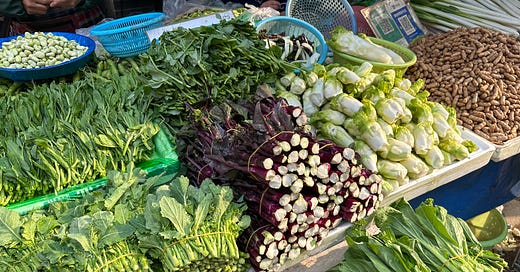


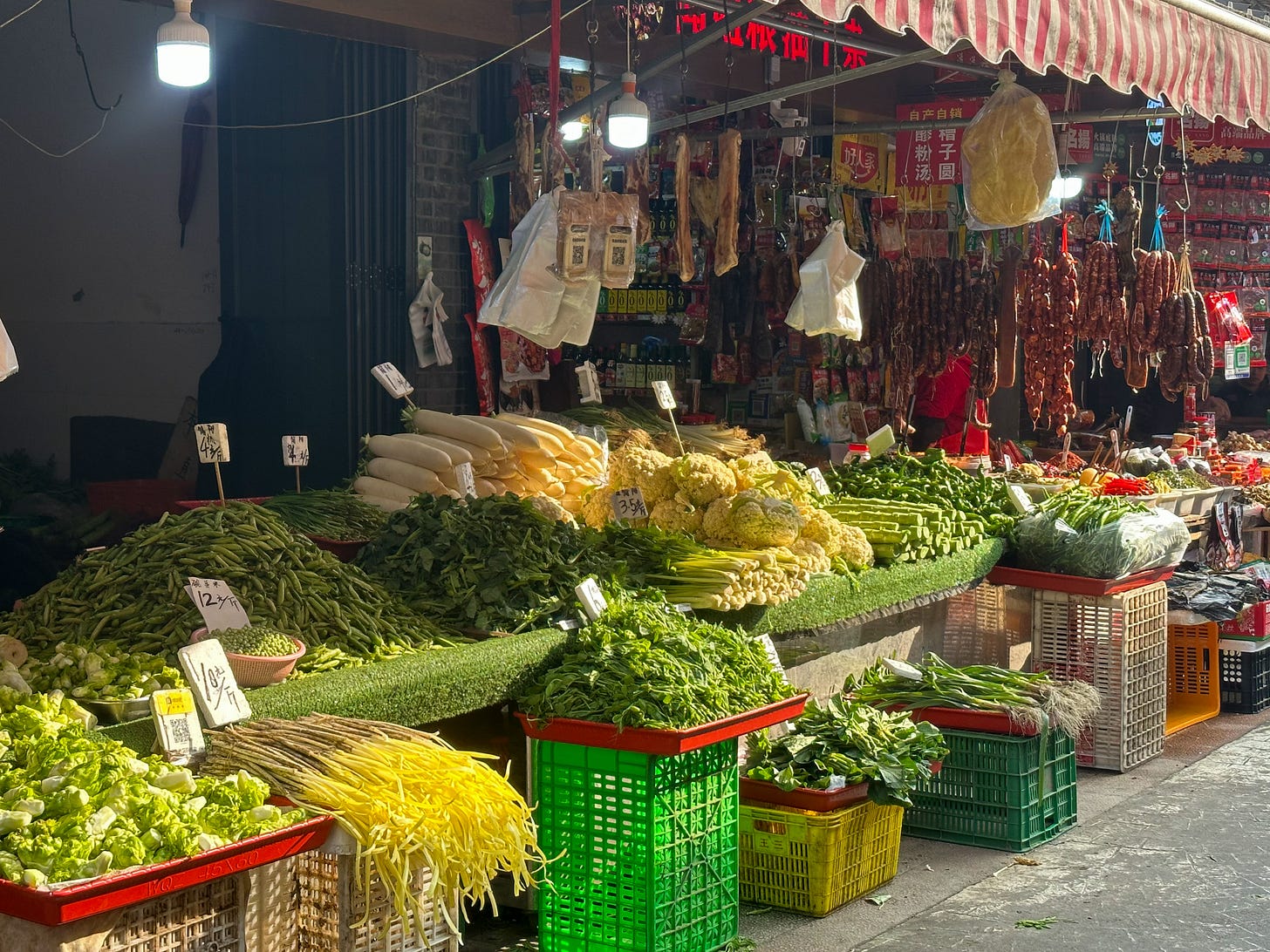
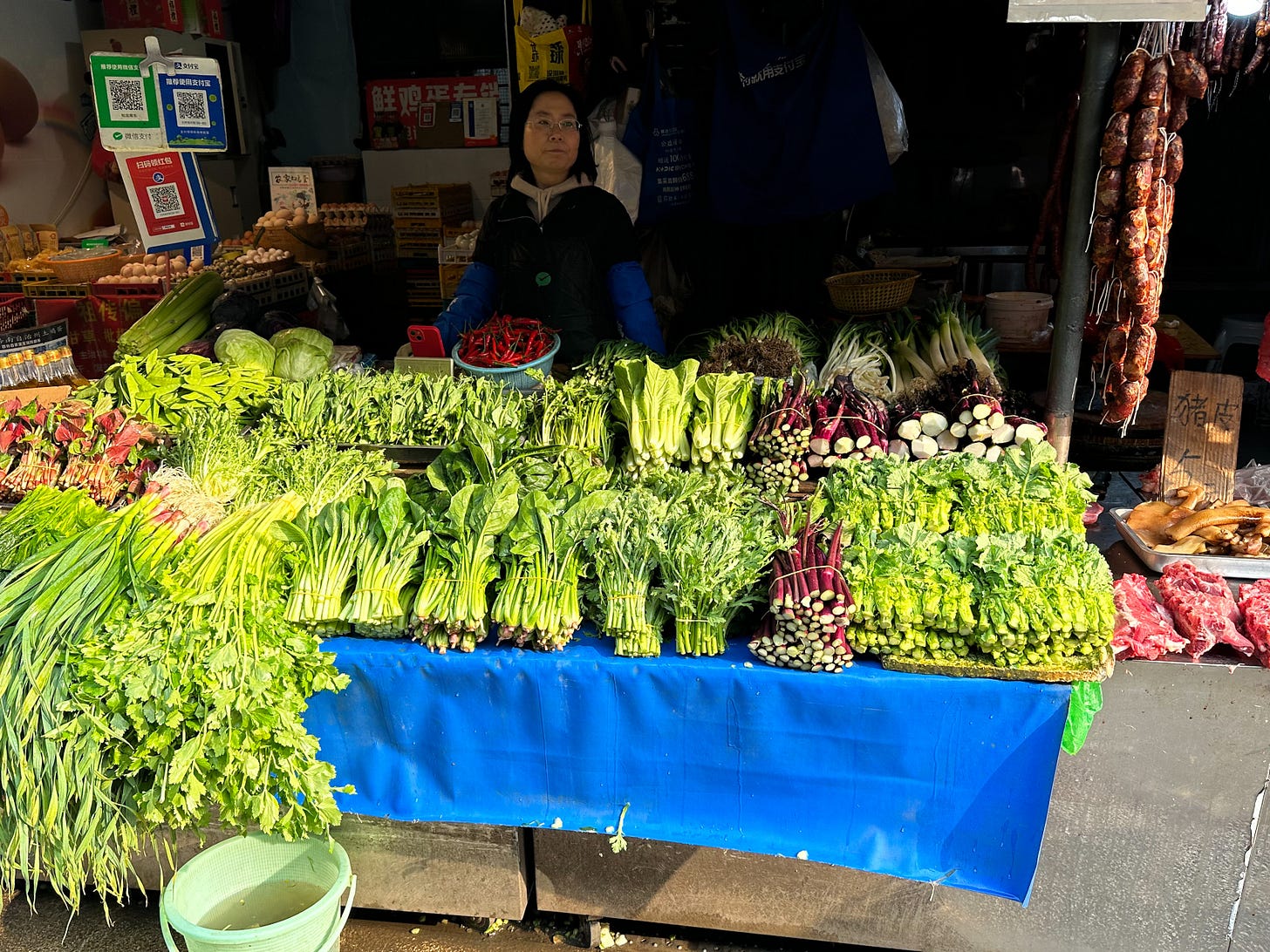
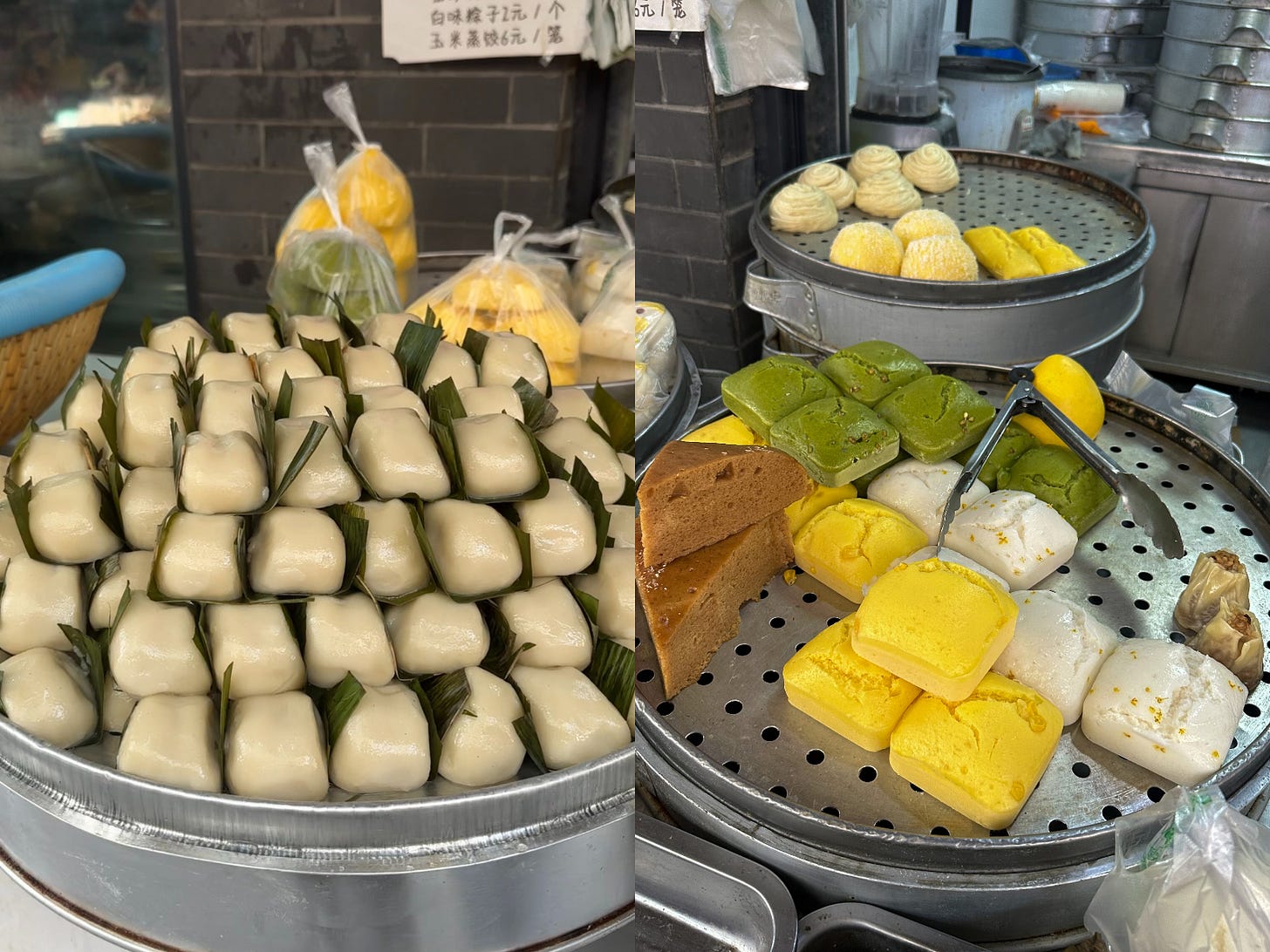

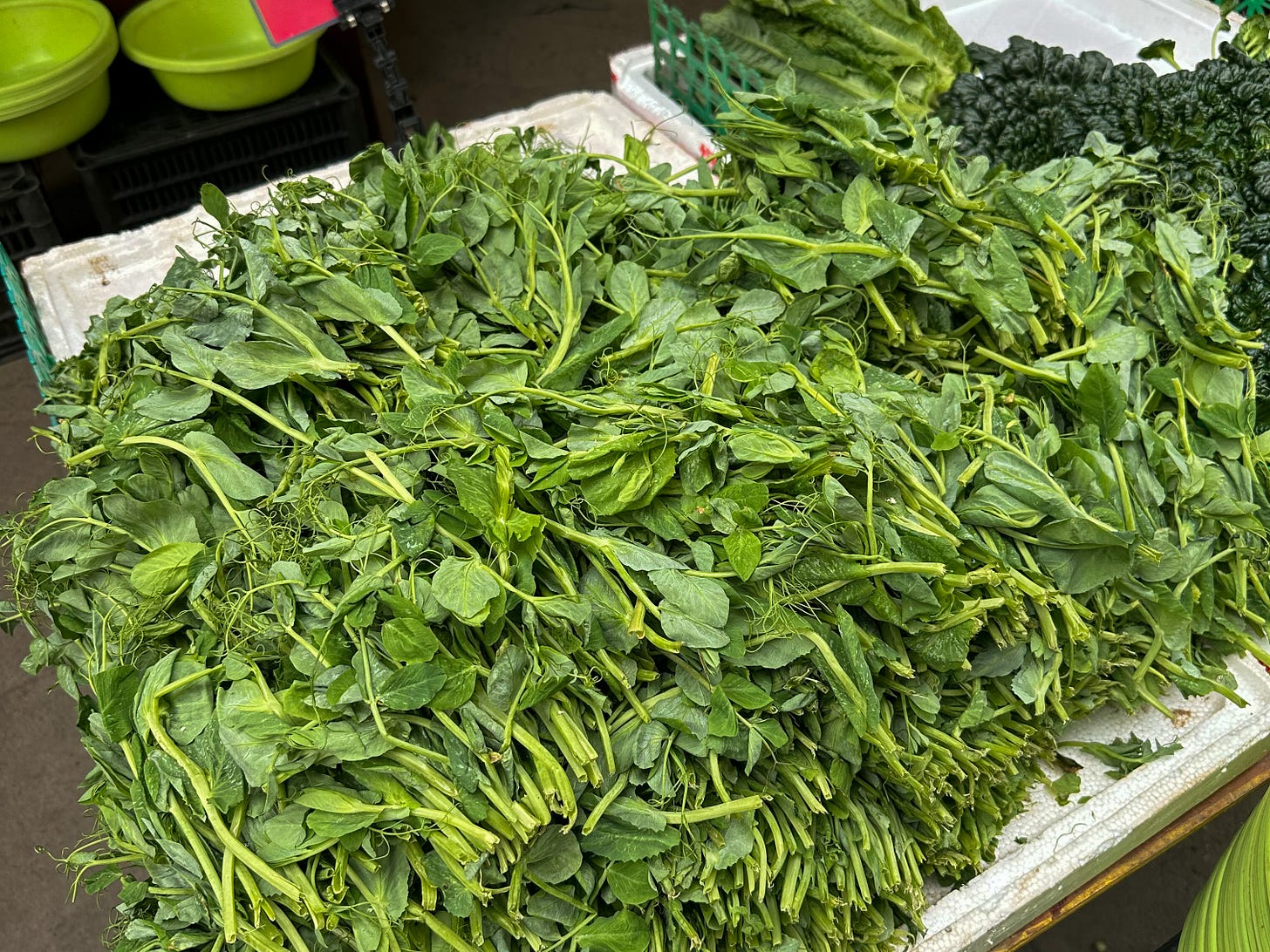
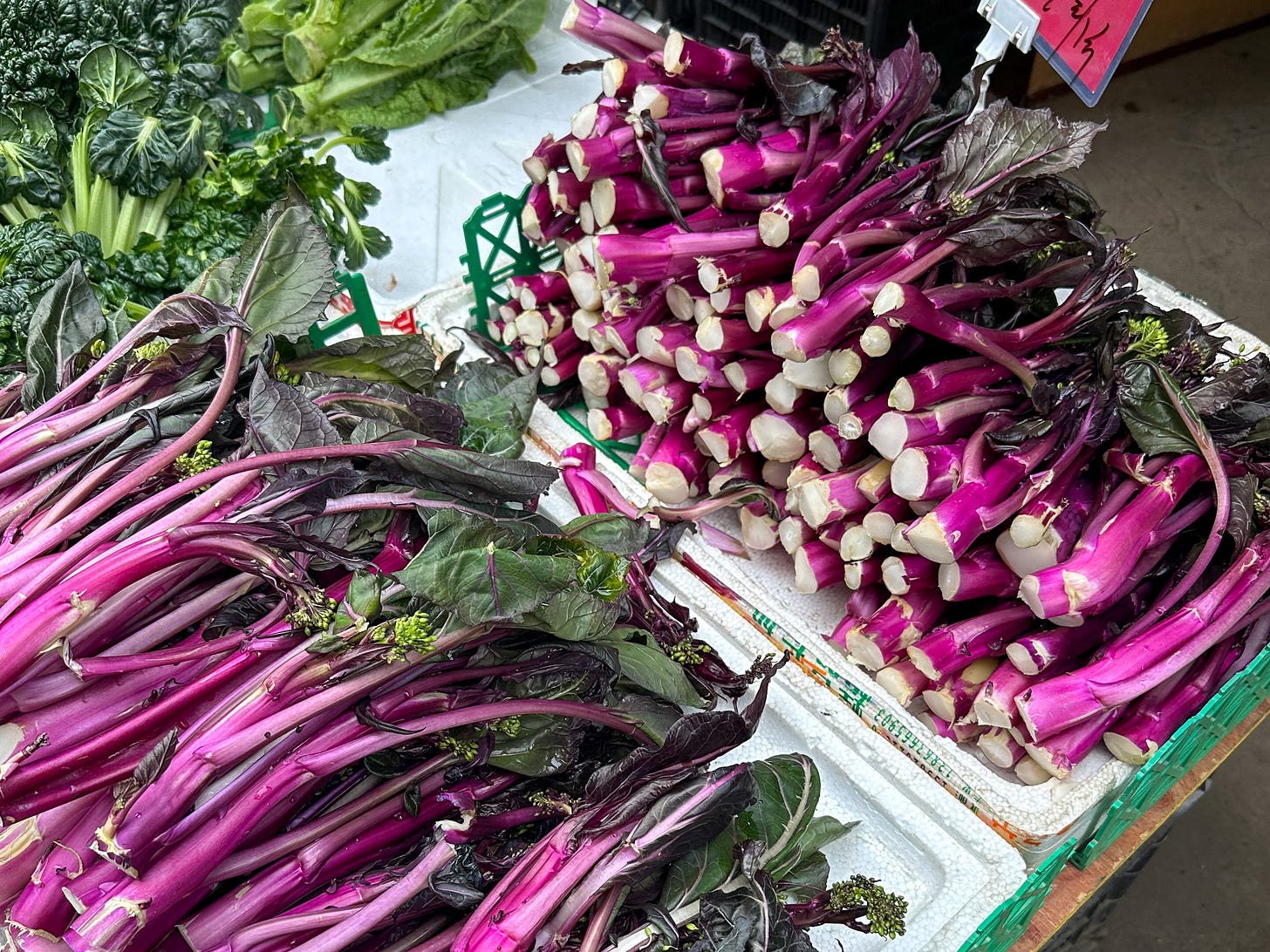
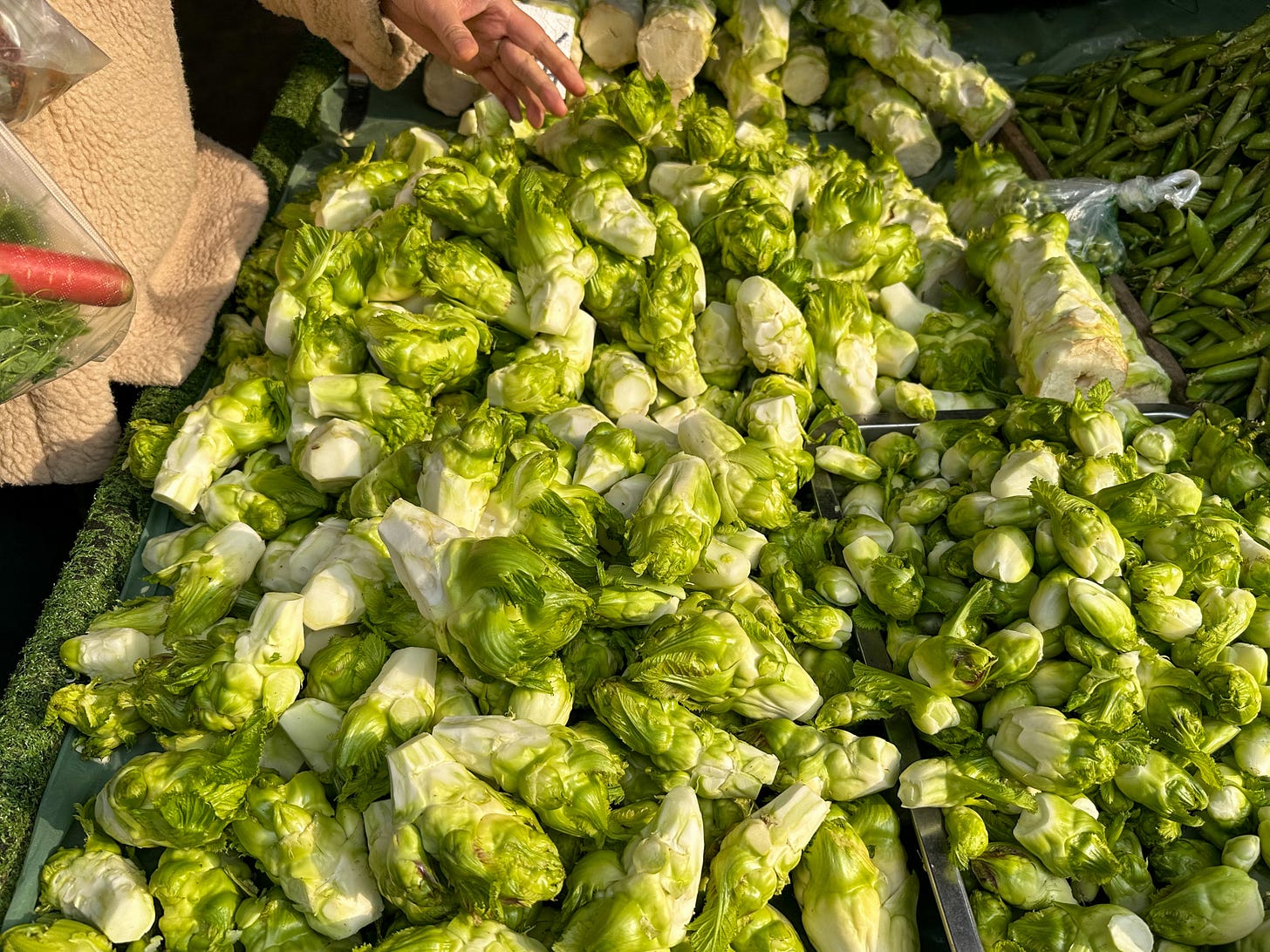
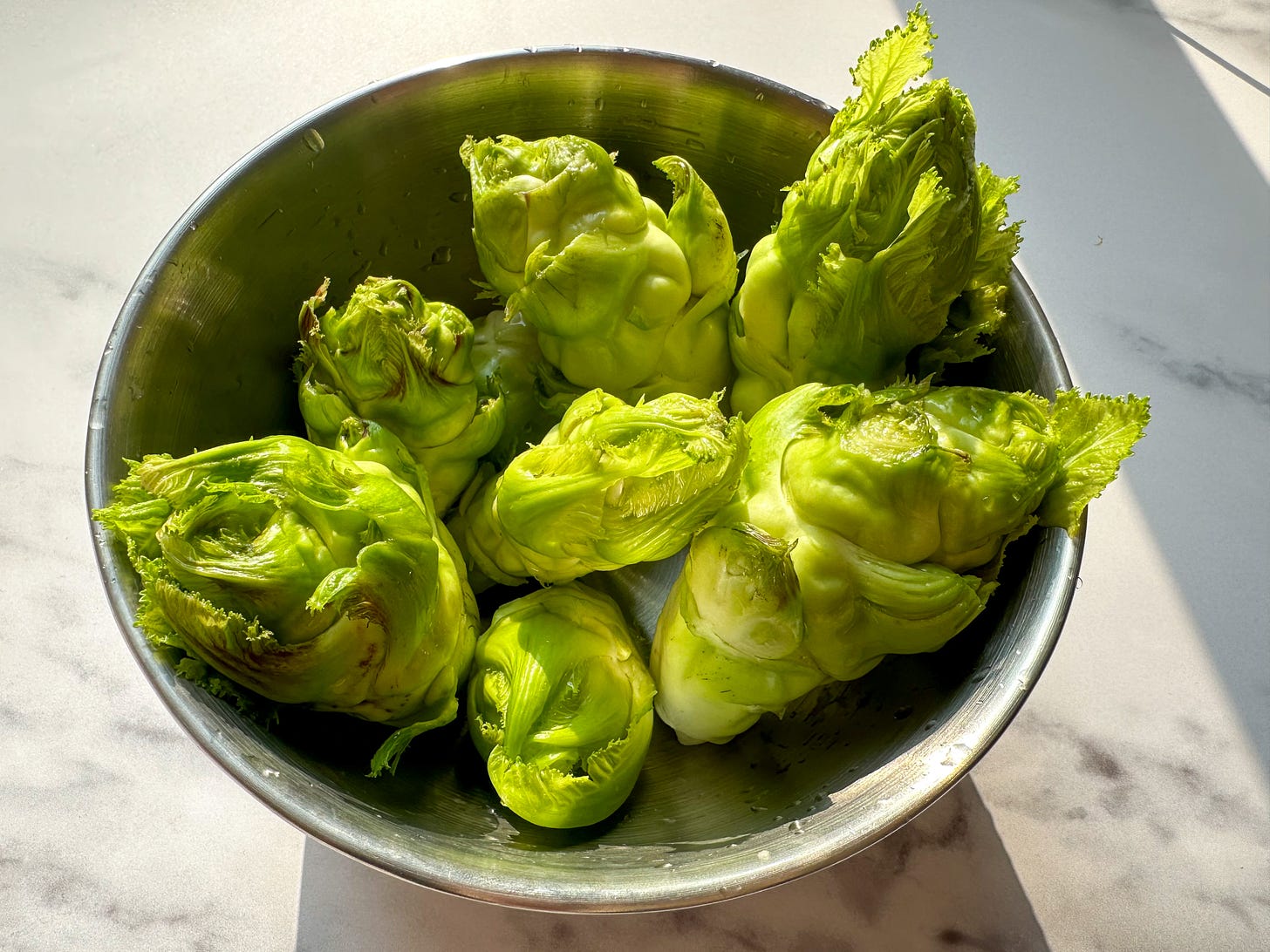
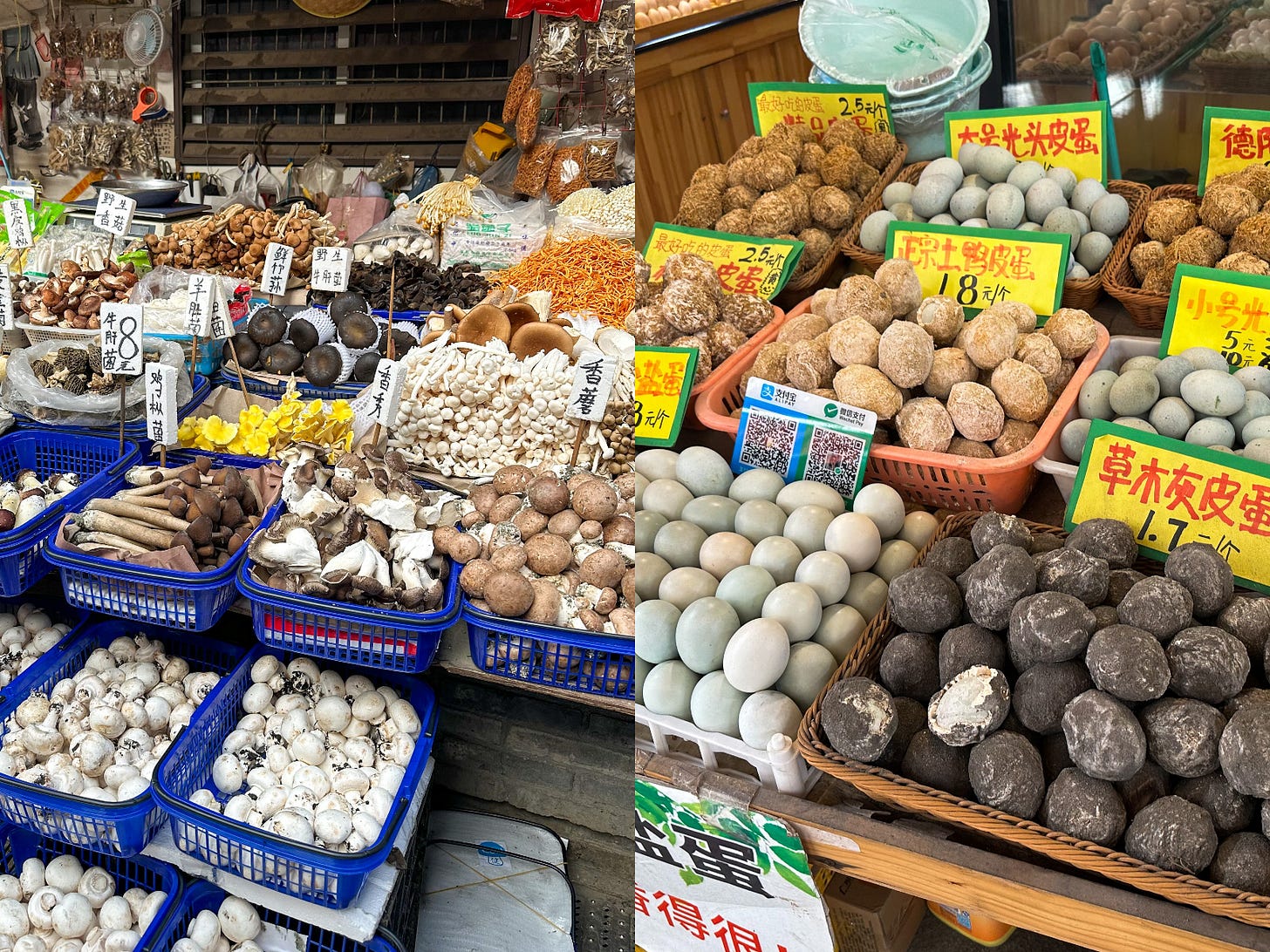


Such a cool insight, felt like I was walking alongside you <3
Lovely pictures!
I used to live around the corner from a Szechuan restaurant in NYC and my favorite order had a brassica in it that I still miss and never had anywhere else. I wonder if it was green cai tai. (The red is so beautiful!). I might try to grow some this year ... yum